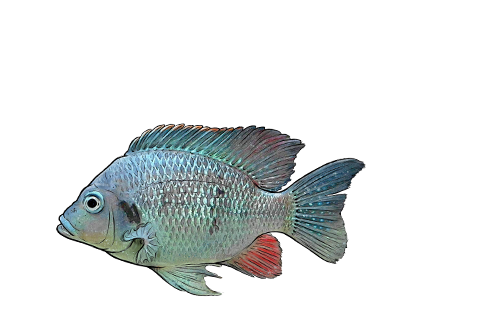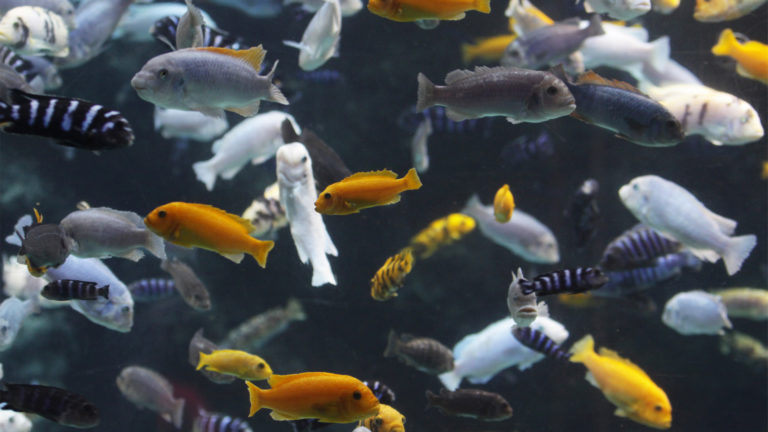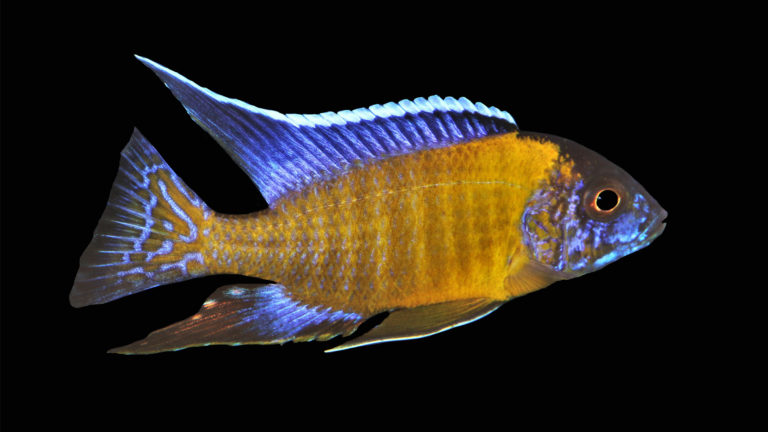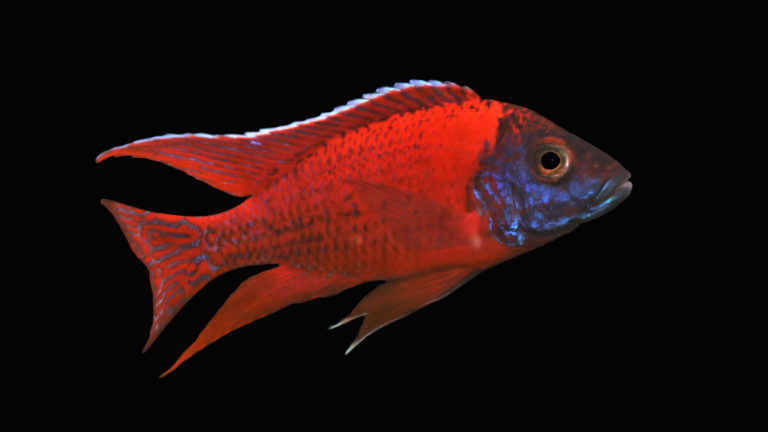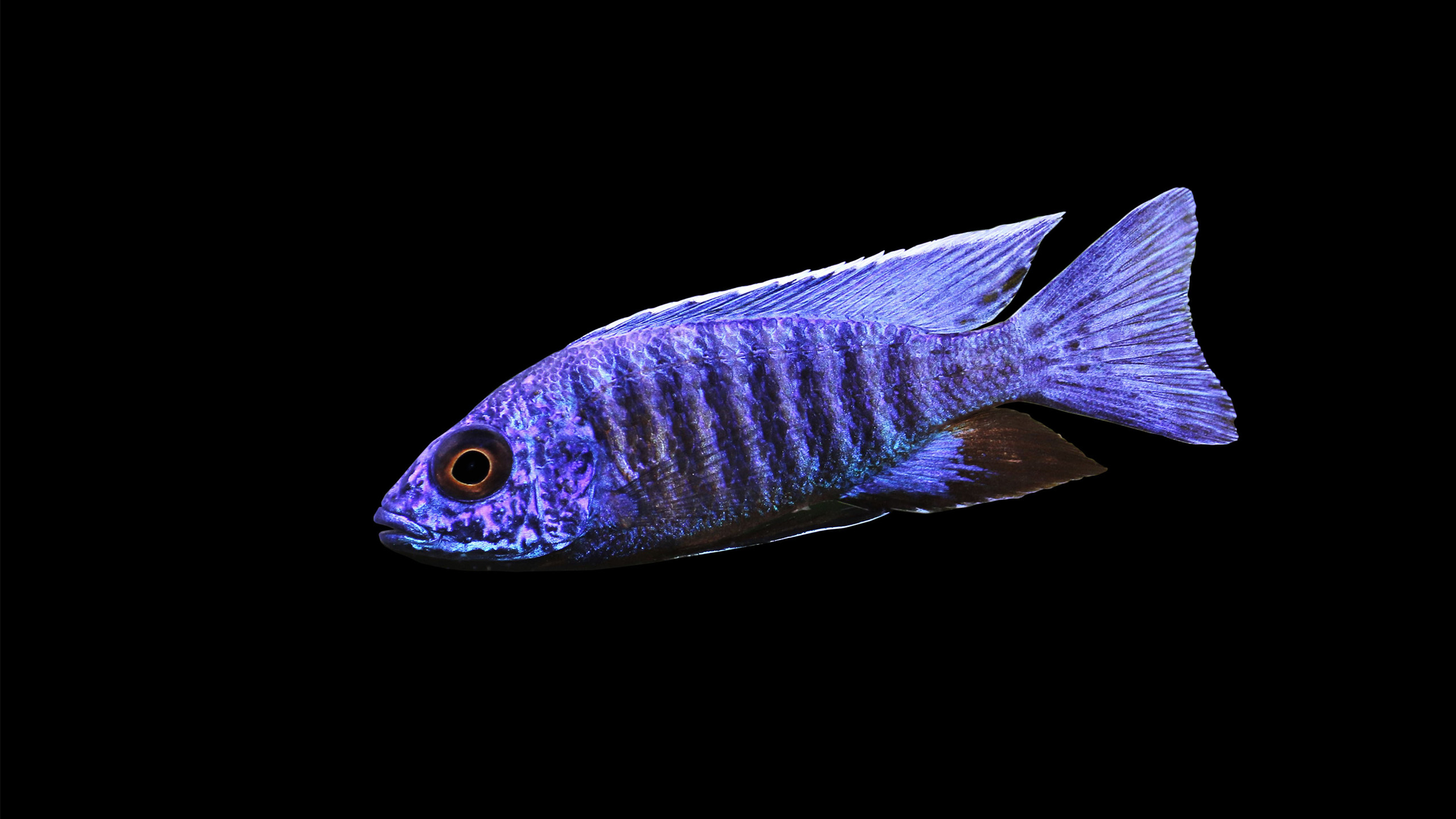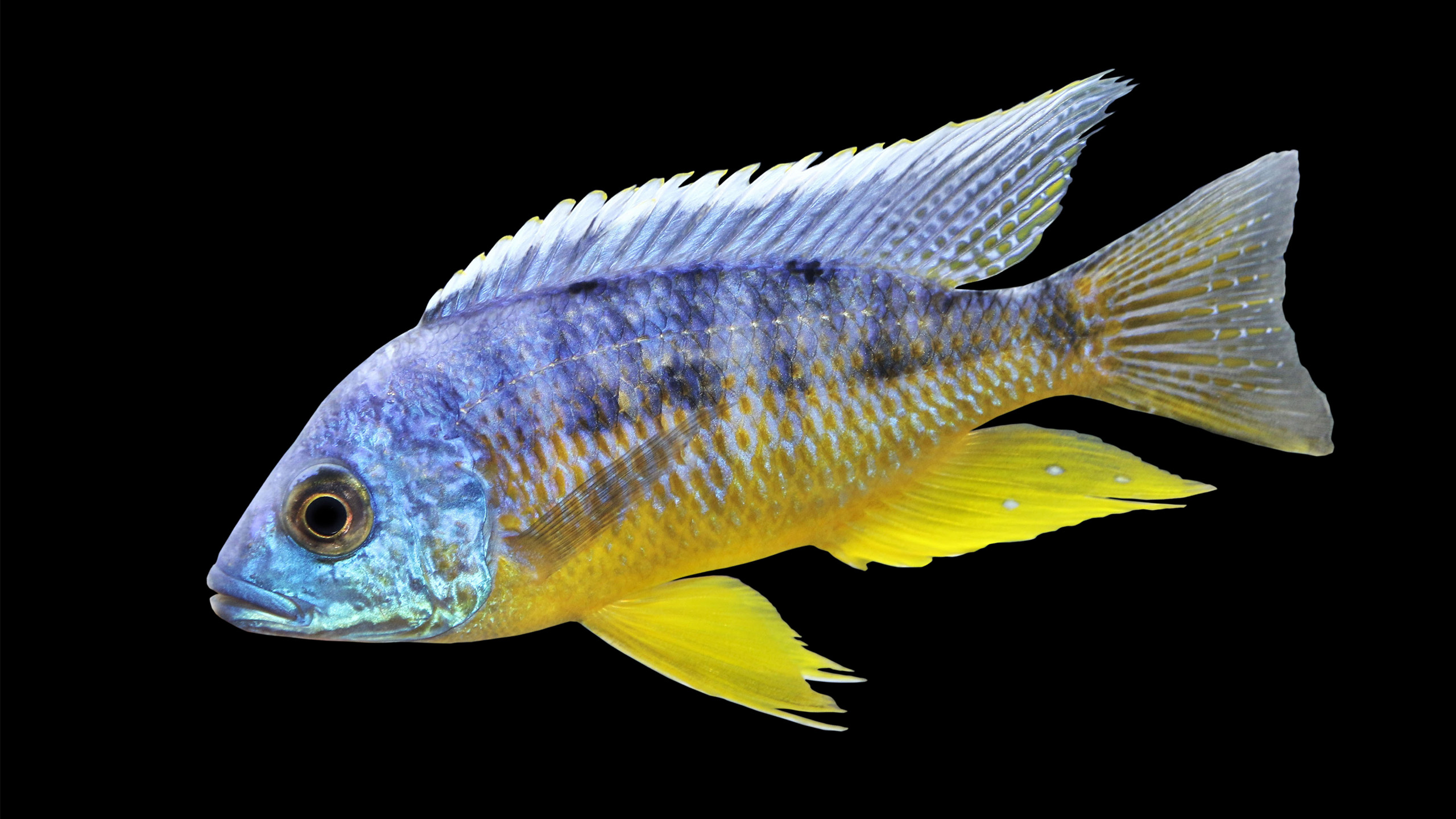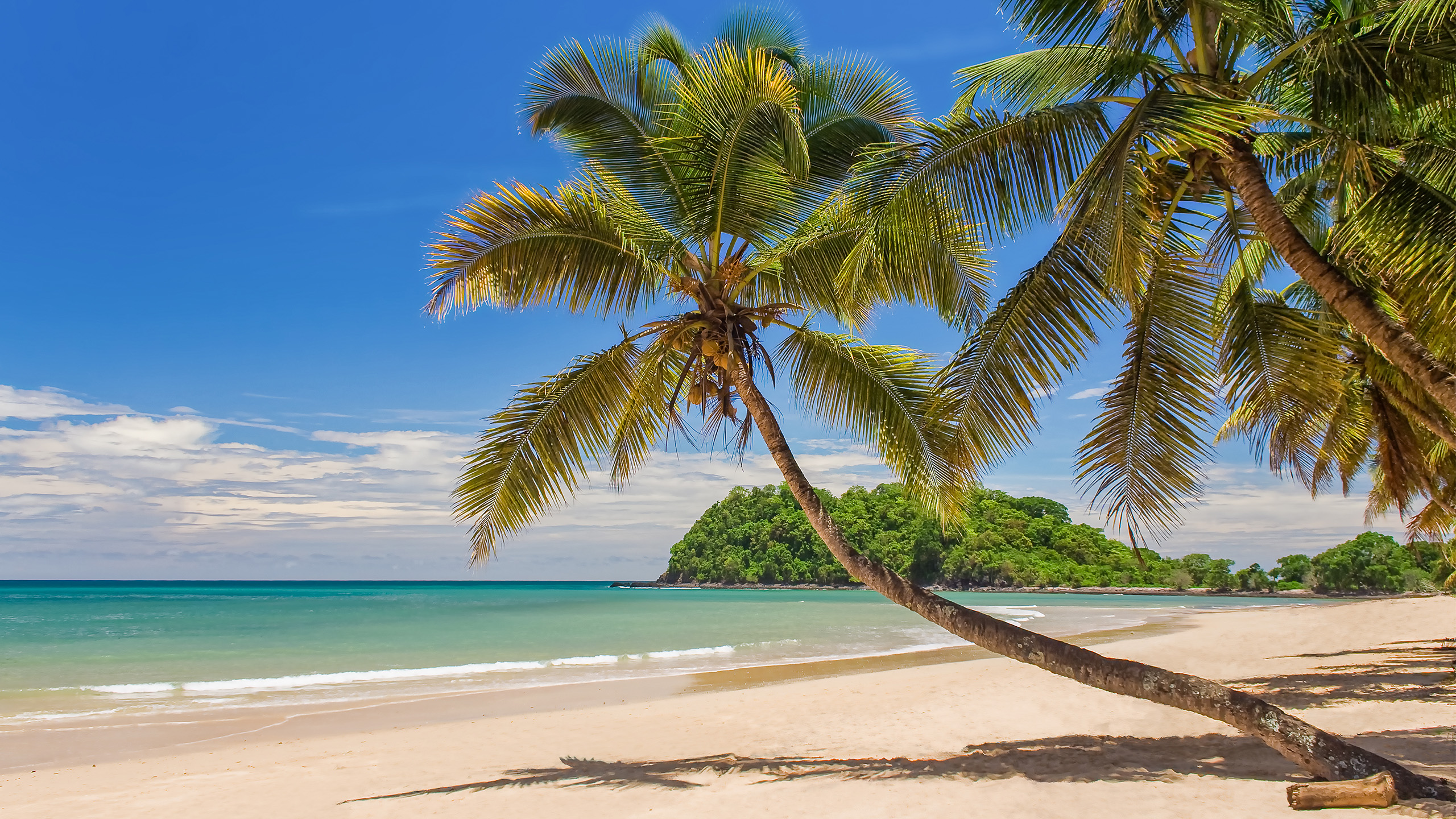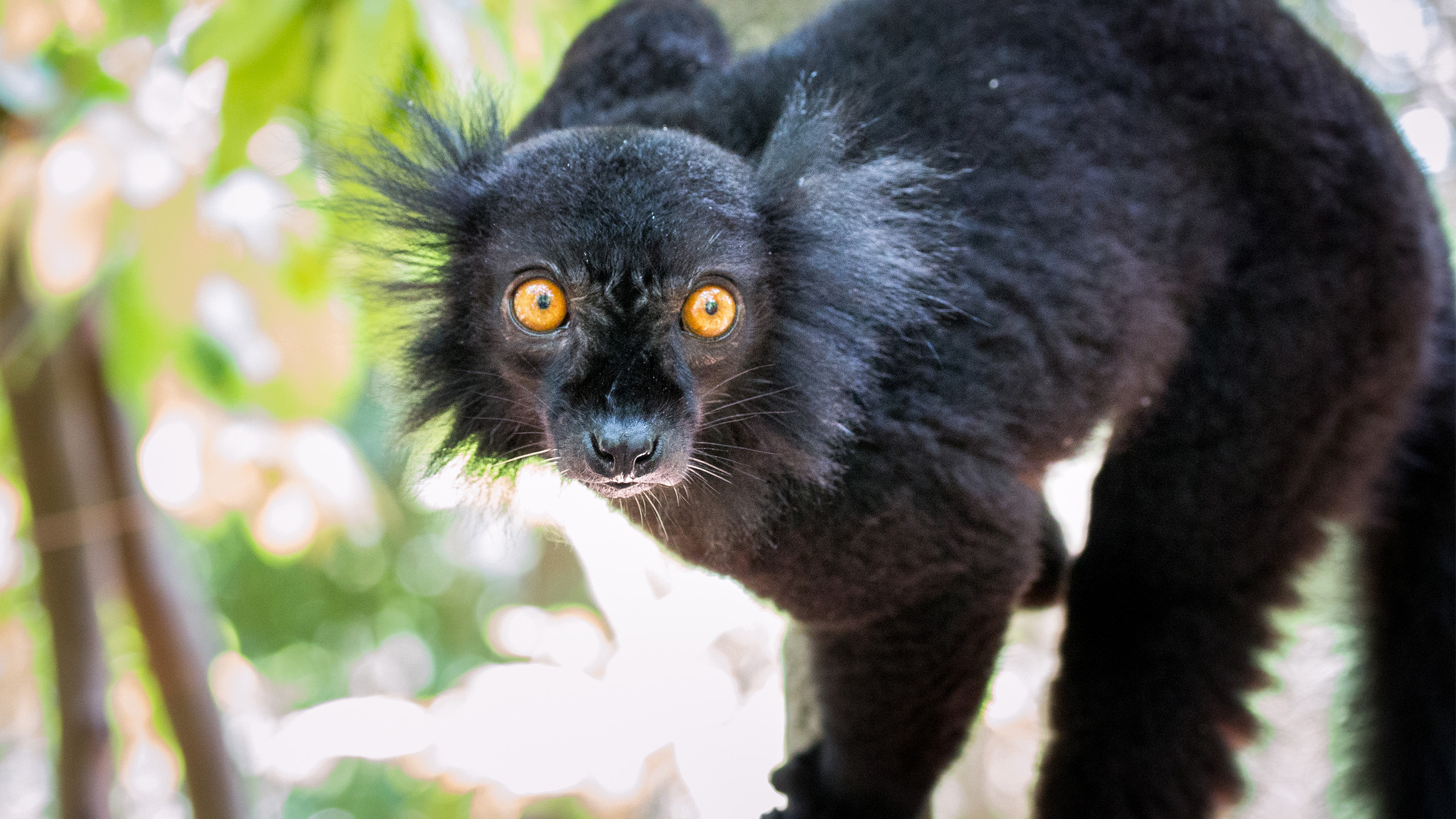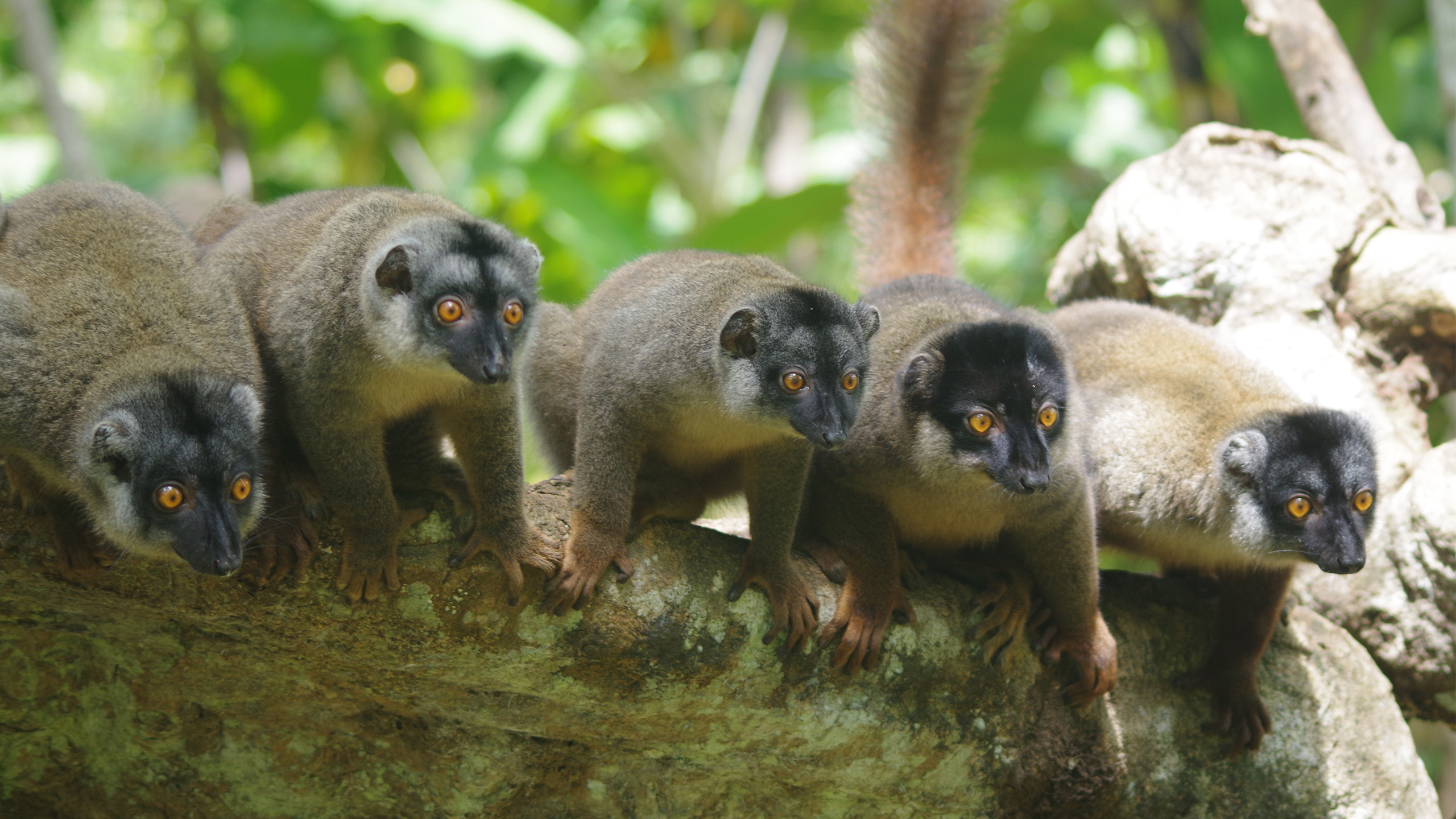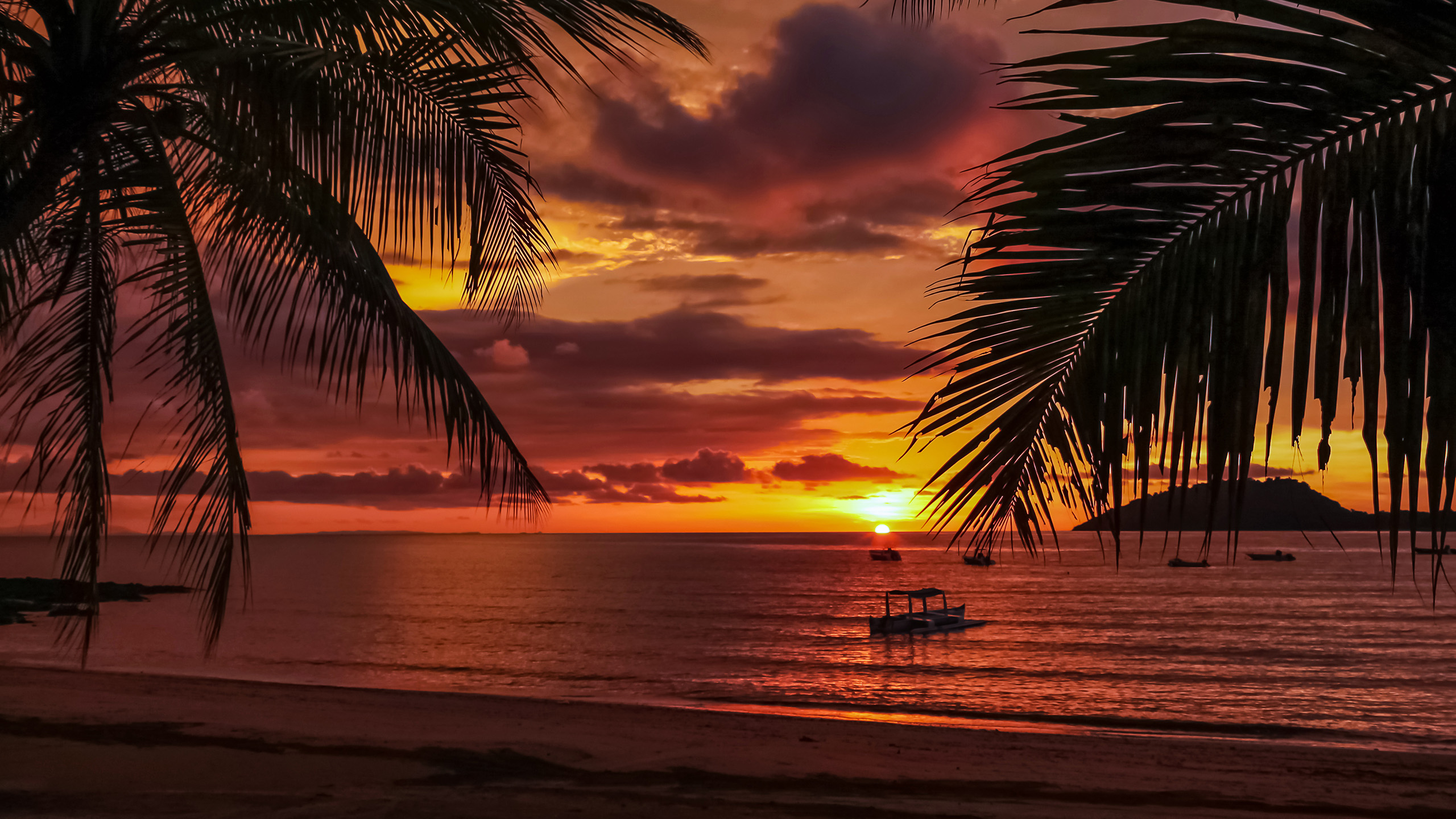Nosy Be Cichlid
Ptychochromis oligacanthus
Nosy Be Cichlid
Ptychochromis oligacanthus
CC goal
16 breeders
Status 11/2025
CC goal
192 animals
Status 11/2025
CC goal
16 breeders
Status 11/2025
CC goal
192 animals
Status 11/2025
Let’s just take the East African Lake Tanganyika: 250, only there occurring cichlid species swim around in this one body of water. In Lake Malawi, not too far away, there are more than 400, in Lake Victoria even 500. The species richness of the fish family Chichlidae in African waters is simply breathtaking. How could it come to this? For evolutionary biologists, this is an extremely exciting question.
High performance evolution
Species formation at speed
Particularly striking is the speed at which different species have formed in African lakes. In Lake Victoria, for example, this happened in the blink of an eye. It took only 15,000 years for 500 completely different species to develop there that exist nowhere else in the world. This is what biologists call adaptive radiation. The predecessors of today’s cichlids moved into the newly formed lakes and found paradisiacal conditions there – namely, practically no competition. So they quickly occupied every available niche. And to avoid getting in each other’s way, they specialized and developed different colors, patterns, feeding and reproduction strategies. Different strokes for different fish.
Shelter Nosy Be
Madagascar Pole of Rest
On Madagascar, however, things were different. On the entire huge island continent, there are just about 40 cichlids. Interestingly, in terms of developmental history, they are quite far down at the root of the cheerfully proliferating cichlid family tree. This makes the Malagasy cichlids a particularly valuable research object compared to their explosively species-forming close relatives on the continent. Unfortunately, it is to be feared that researchers will not have much time left to study these evolutionary-biological gems in more detail, because many of Madagascar’s cichlids are on the brink of extinction. Virtually all Malagasy chichlids are endangered, critically endangered, or even threatened with extinction – if we know that at all, because data is lacking for many species. Not so with the Nosy Be cichlid. It is already known that it is highly endangered. It lives in the northwest of Madagascar, where its home waters have been massively affected by large-scale deforestation and subsequent erosion, which has led to massive siltation and deterioration of water quality. Unless the water is completely removed for irrigation. Accordingly, it looks bad for the species there.
The fact that this cichlid is "only" listed as "critically endangered" on the Red List is due to a special circumstance: its occurrence on Nosy Be. The crater lakes of Nosy Be
The crater lakes of Nosy Be are home to the Nosy Be cichlid © Pierre-Yves Babelon
Guarded by crocodiles
The fact that the Nosy Be cichlid is “only” listed as “critically endangered” on the Red List is due to a special circumstance. As its name suggests, it is also found on the offshore island of Nosy Be, where it swims around in the still largely undisturbed crater lakes. The fact that the situation is much better there is due on the one hand to the more traditional way of life of the people on Nosy Be, and on the other hand to the traditional way of life of the Nile crocodiles that occur there in high density. This ensures that many people prefer to stay at a distance. In the meantime, the crater lakes have become part of a protected area. This benefits not only the Nosy Be cichlids, but also many other native species.
Nosy Be Cichlid © Thomas Ziegler
The lake
Aquariums are sometimes referred to as “lakes in a glass,” and accordingly Citizen Conservation is trying to significantly increase the number of lakes where the Nosy Be cichlid finds safe refuge. Starting with the Cologne Zoo, which cares for and breeds the cichlid in its program for endangered Malagasy freshwater fishes, many more husbandries are to be established, also with private aquarists, in order to build up a stable population in human hands as a safety copy. So that soon crocodiles will not be the only ones watching over these quaint representatives of one of the most exciting groups of animals on the planet in terms of evolutionary biology.
For breeders
Basic information on biology and breeding
The Nosy Be Cichlid is easy to keep, but can react aggressively within the species. Aquariums of at least 1.5 m length and 500 l water volume are suitable for keeping a group of approx. 8 adult specimens. Good experiences in keeping and breeding have been made so far with the following values: temperature 24 – 25 °C, carbonate hardness 3° dH (KH), GH 5, 230 microsiemens, 7.5 pH. Suitable food: commercially available flake food; frozen food (white, black and red mosquito larvae and brown shrimps); live food (artemia, white mosquito larvae).
